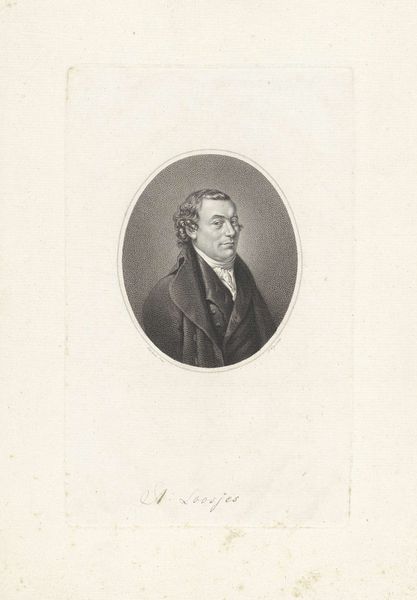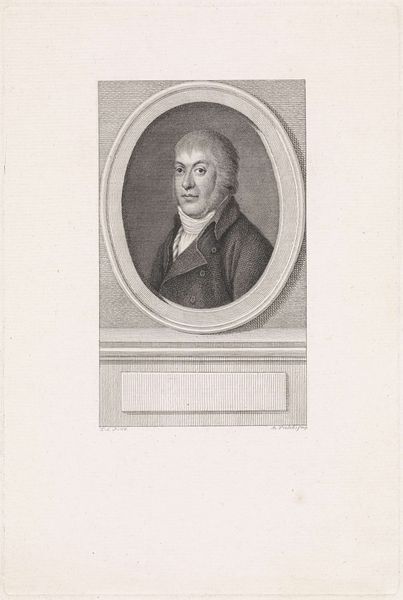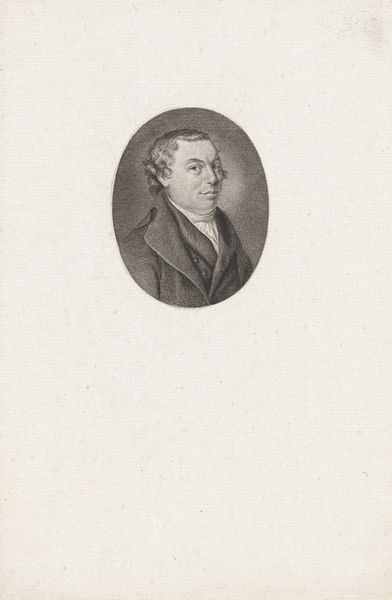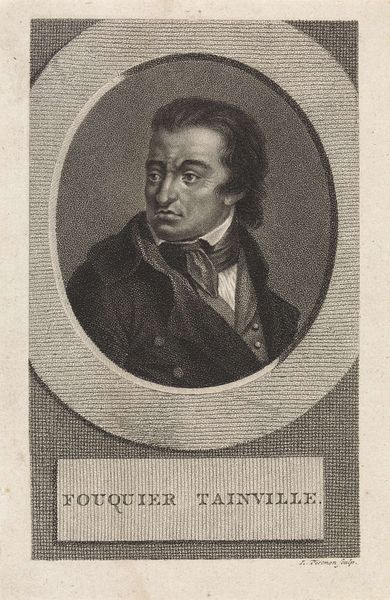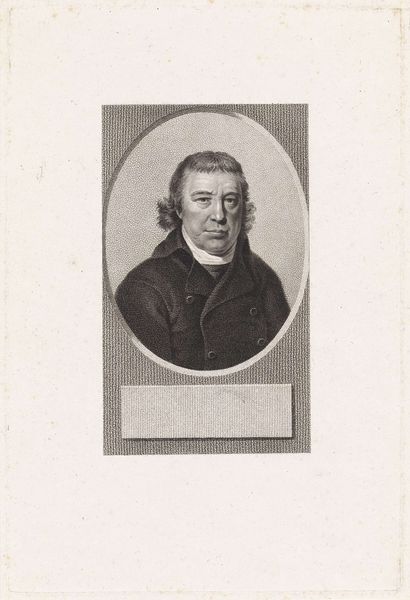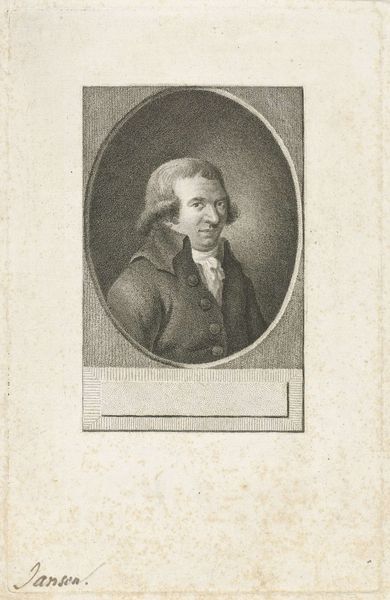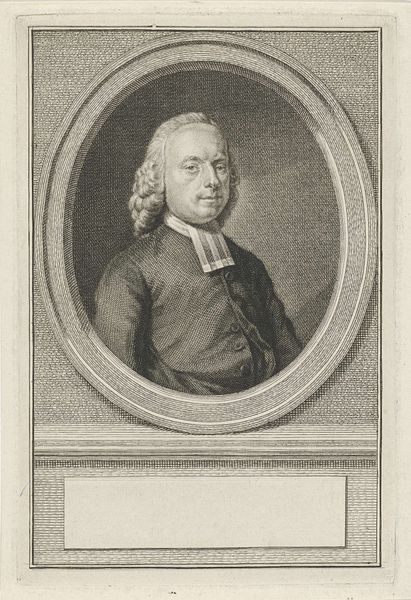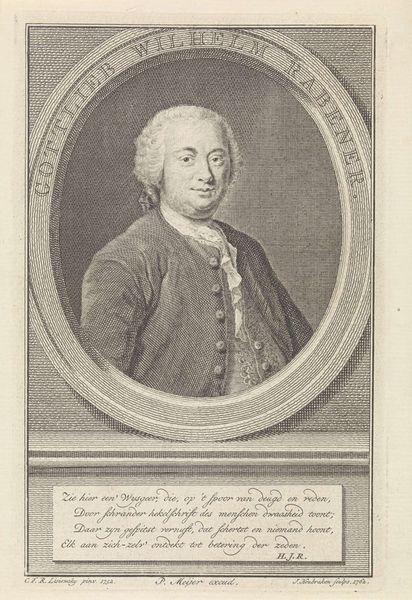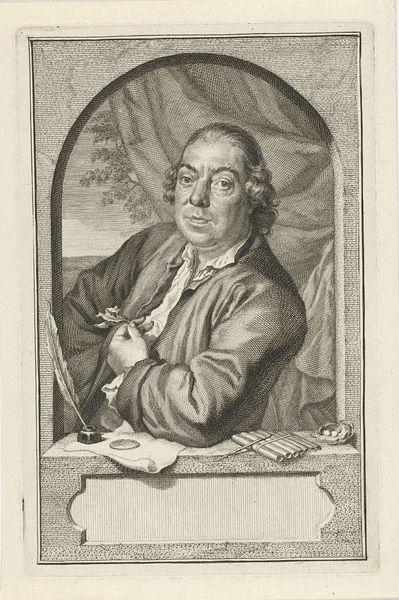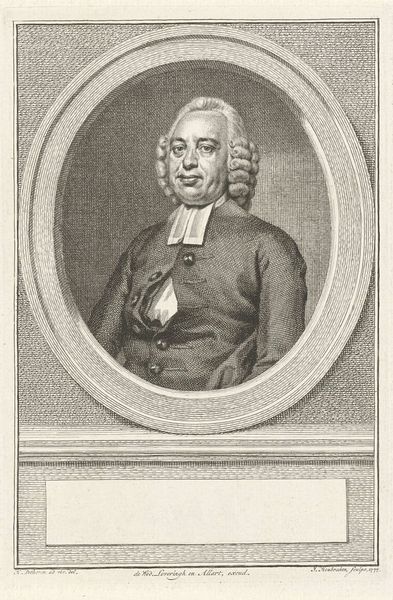
print, engraving
#
portrait
#
neoclacissism
# print
#
old engraving style
#
portrait reference
#
engraving
Dimensions: height 244 mm, width 150 mm
Copyright: Rijks Museum: Open Domain
Curator: Welcome. Today, we're looking at a print titled "Portret van Adriaan Pietersz. Loosjes," an engraving made in 1796 by Reinier Vinkeles. It's currently held in the collection of the Rijksmuseum. Editor: Oh, there's a severity in the gentleman's gaze! But a softness too; the engraving makes it seem like he's captured mid-thought. I’m immediately struck by the texture…the intricate linework creating volume in his coat. Curator: Exactly! The neo-classical style, which valued precision, greatly influenced printmaking during this era. Engraving was a painstaking process, demanding intense focus and skill to translate an image onto a metal plate, layer upon layer of incisions. Consider the social status conveyed: Prints like these played a key role in distributing likenesses and promoting political figures. Editor: Yes, it speaks to the value of accessible portraiture, allowing the middle classes access to art once only available to the elites through painting, in that way the process democratizes the form. I imagine this fellow was quite pleased to see himself multiplied for posterity! Though I do wonder about the environmental cost of paper production at that time... Curator: That's a worthwhile point. It’s critical to note the materials employed and their societal context; paper-making relied heavily on linen rags in the late 18th century, so scarcity directly impacted cost. And there's always the element of labor involved to produce works like this, that of the artist as well as the labour for the physical production. The artist not only has to use incredible skill but it’s hugely physically demanding work. Editor: Looking at it now, it strikes me almost as a document—a snapshot from another time rendered so precisely. The oval frame somehow magnifies that effect, almost like looking into a well and finding somebody staring back at you, very consciously posed for effect and status. Curator: It truly highlights the convergence of art, labor, and materiality. Consider, this artwork isn't solely about aesthetics; it’s an artifact of socio-economic conditions of the time. I’d argue that the level of detail tells us something about that work, that time. Editor: I like the thought, that the art process mirrors the layers of the society that fostered it, both materially and ideologically, in this example of class and societal shift, with just a touch of the ghostly. Thanks for bringing that out.
Comments
No comments
Be the first to comment and join the conversation on the ultimate creative platform.


